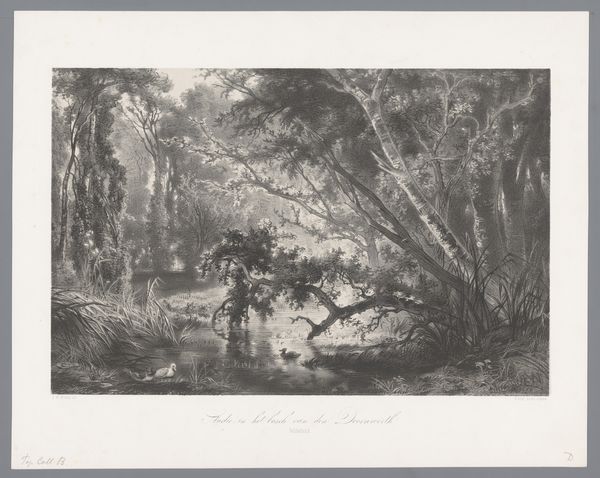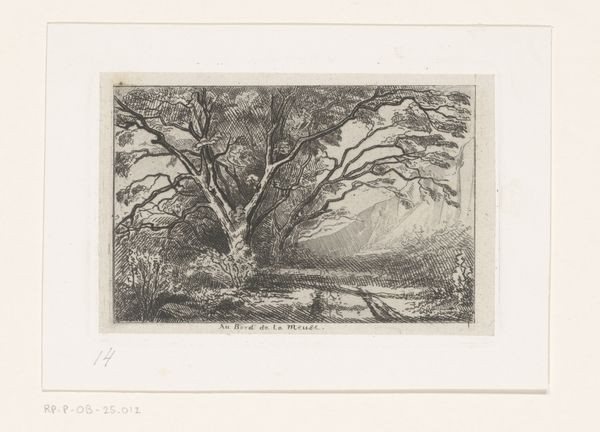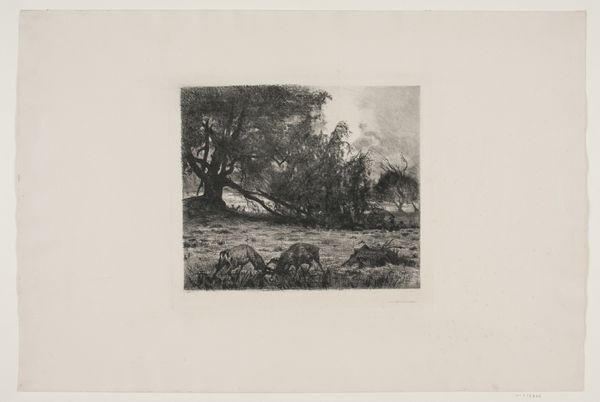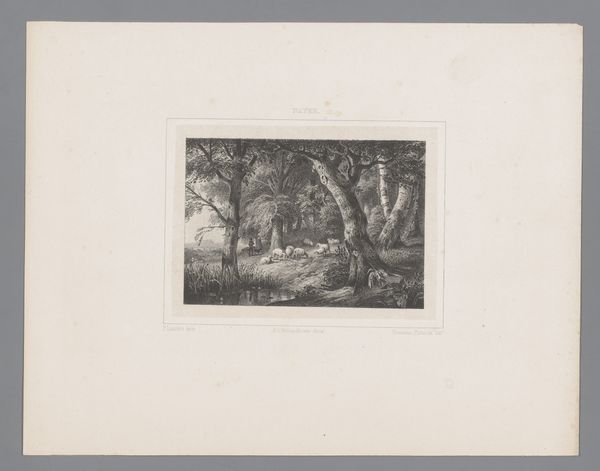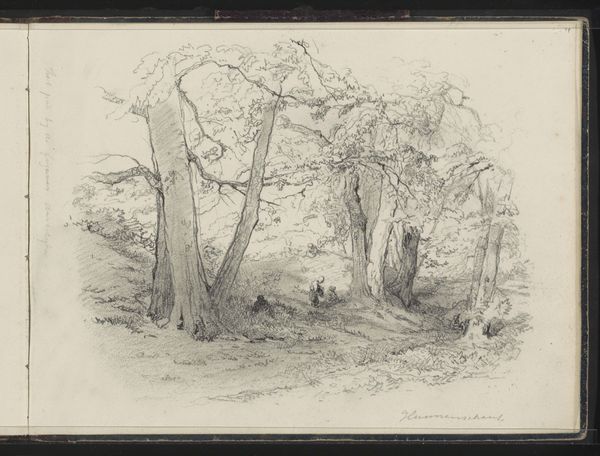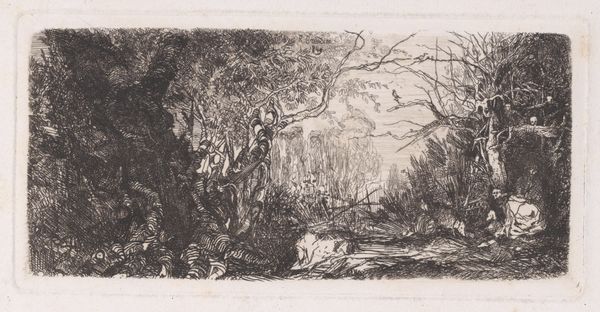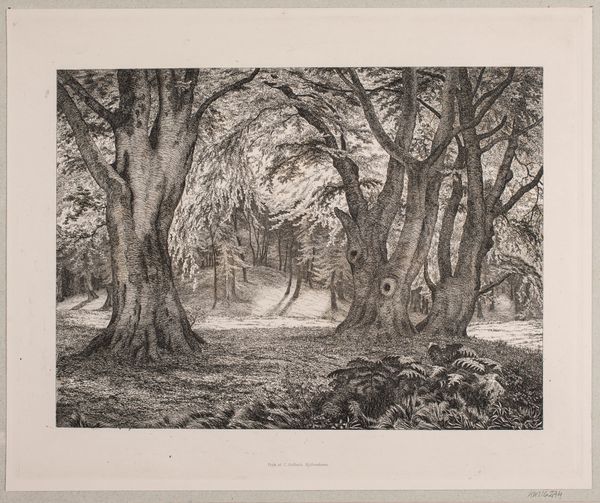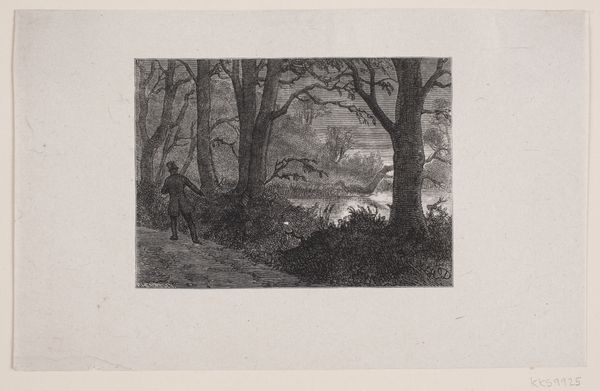
print, engraving
# print
#
landscape
#
river
#
romanticism
#
engraving
Dimensions: height 417 mm, width 541 mm
Copyright: Rijks Museum: Open Domain
Editor: This is "Gezicht op de monding van de Fox River te Indiana," or "View of the Mouth of the Fox River in Indiana," a print made sometime between 1811 and 1872 by Sigismond Himely. It's an engraving. The stark contrasts between light and shadow really strike me; they create such a dramatic, almost theatrical atmosphere. What do you see in this piece from a formalist perspective? Curator: Indeed, the strategic deployment of chiaroscuro immediately commands our attention. Note the artist’s meticulous layering of lines to construct the dense foliage on the left, juxtaposed against the relative openness of the river basin. Consider the interplay between these densely packed and sparsely detailed zones. Editor: So, the composition is structured around this contrast between density and openness. Curator: Precisely. Observe how the branches frame the river, directing the eye towards the horizon. The linear perspective, while somewhat rudimentary, creates depth and a sense of receding space. What effect does this use of framing and perspective have, in your estimation? Editor: It focuses my eye on the river and the light reflecting off its surface, almost like a stage. It makes the scene grand but also slightly remote. Curator: Excellent observation. Now, let us examine the texture achieved through the engraving technique. The varying line weights and densities produce a remarkable illusion of tactile surfaces, don’t you agree? Editor: I do. Looking closely, the technique definitely enhances the sense of depth and realism, despite it being a print. I’ve definitely learned to look past the ‘obvious’ and to focus on how line and shadow shape space and draw my eye through the composition. Curator: And I am reminded of the power of rigorous observation, focusing on technique, form and how these guide a response, without needing the crutch of history or biography.
Comments
No comments
Be the first to comment and join the conversation on the ultimate creative platform.

